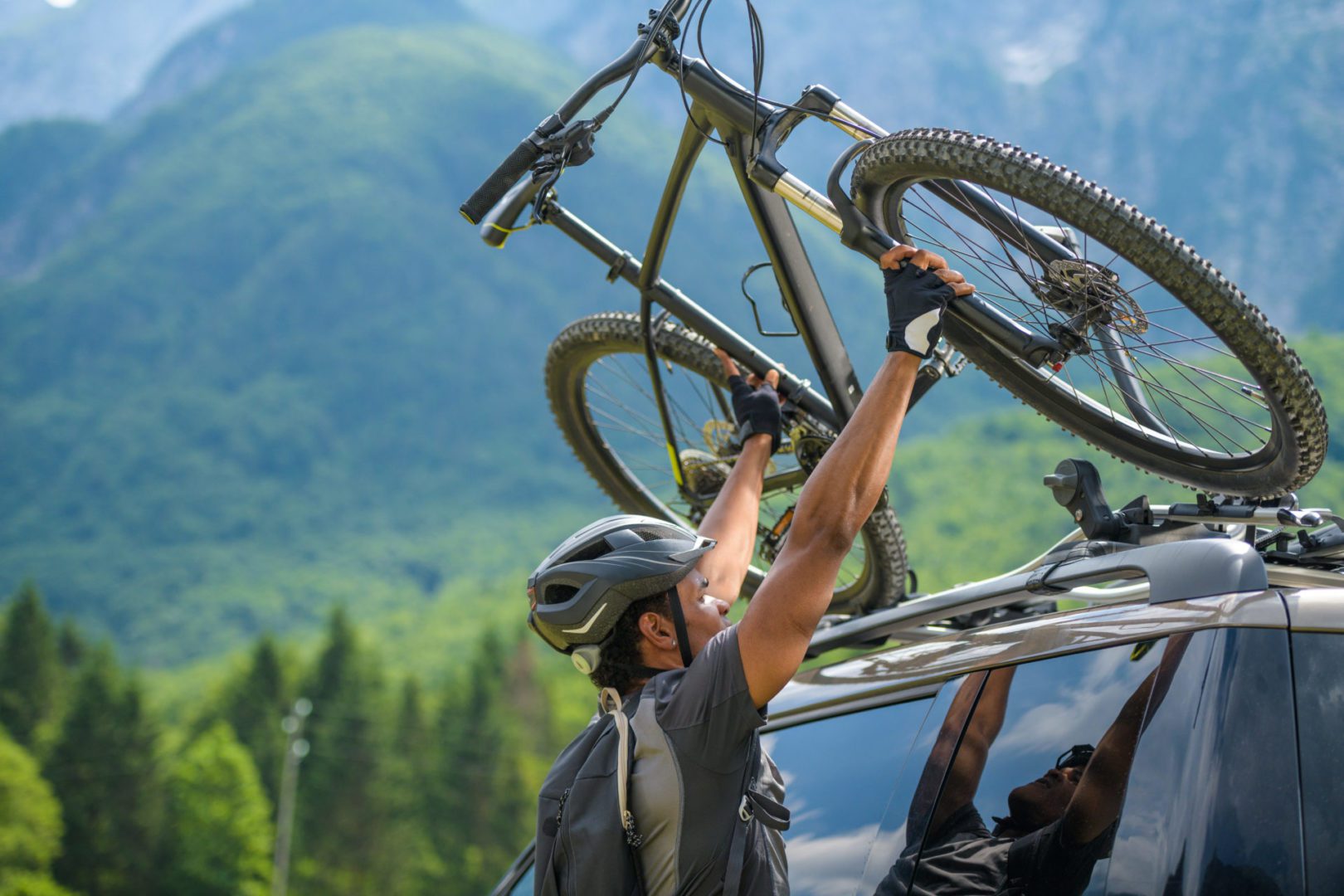Safety Tips for Hauling Bikes, Kayaks, and Skis

There’s nothing quite like the first lake trip of the summer or heading to the slopes once there’s finally enough snow. With seasonal activities comes the need to haul gear, such as bikes, kayaks and skis. The last thing you want to do is damage these items, your car or your garage in the process, so here are some tips for hauling this equipment safely and securely.
Bicycles For cars and SUVs, bike racks can be installed permanently on the roof or in two ways to the rear of the car
- Roof racks provide the most stable and secure transportation, but they substantially heighten your car and may make it impossible to park in your garage or parking garage without removing the bikes.
- Trunk racks tend to be less expensive than other hauling options, but they are also less secure, making your bikes more susceptible to theft. Removing the rack can scuff your car’s paint, and rear-end auto accidents would most likely damage your bikes.
- Hitch racks keep bikes secure while driving, but they’re not as secure from theft when you’re gone. They require installation of a hitch, which can help haul other recreational equipment, too.
- Crossbars can be attached to factory-installed bars on the top of your car. To keep these stable, use two cam straps that are at least 12 feet each to secure the kayak in place. Simple knots will keep them secure but adding a twist can prevent the straps from vibrating while you drive.
- J-cradles and stackers allow you to transport multiple kayaks at once. They can be installed on top of factory-installed bars.
- Cargo boxes may require installation of roof rack bars, but they offer efficient storage and keep your skis safe from weathering and potential theft since they can be locked.
- Roof mounted ski racks can be cheaper and easier to install than cargo boxes, but they’re not as secure, and your skis can get dirty as you drive.
- Ski and snowboard carriers attach to a hitch on the back of a car, which could save installation time and money if you already haul bikes using a hitch. They are also susceptible to weathering and theft.